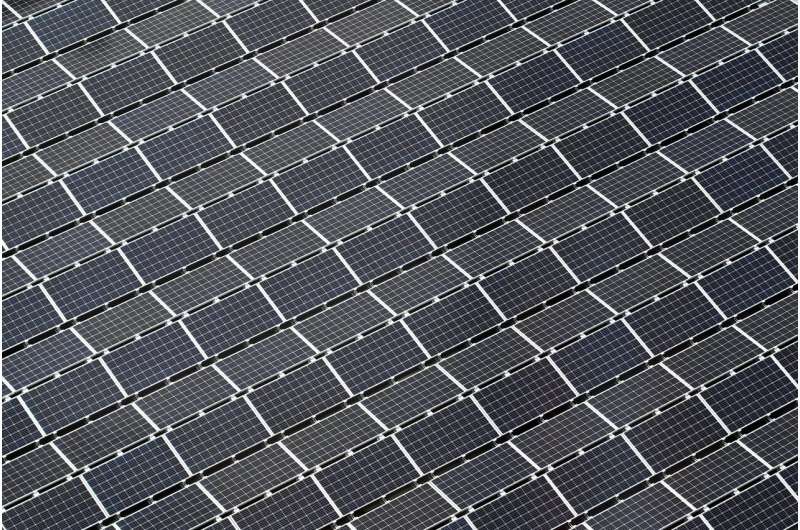Controlling light-matter interactions in silicon metasurfaces

The interaction of light with matter lies at the heart of processes in nature and in society. For example, in a solar cell, light is converted to an electrical current, but the efficiency of this conversion process can be enhanced. One way to achieve this is by trapping light with so-called optical cavities.
For his Ph.D. research, Gabriel Castellanos Gonzalez explored the use of silicon metasurfaces to regulate light-matter interactions.
Exciting excitons
To control and enhance light-matter interactions in technologies such as solar cells or lighting devices, light needs to be trapped in the material of interest. This is achieved using an optical cavity, a device that traps light in a finite space. The simplest example of an optical cavity consists of two parallel curved mirrors where light is trapped by the reflections of each mirror.
Optical cavities allow for the interaction of light and matter to reach a regime known as strong coupling, where light and matter must be treated using the principles of quantum mechanics. This means that light and matter are treated as particles with a known quantum state. For light, the particle is a photon, while for matter, it's an exciton—which is a matter state formed by an excited negatively-charged electron that is bound to the positive hole left behind after the electron is excited to leave it.
Excitons are found in some inorganic semiconductor such as GaAs (gallium arsenide), and in many organic molecules. In the strong coupling regime, the photon and exciton form a new state which is a superposition of the former. That means that it is both light and matter. This hybrid state, known as exciton-polaritons (the exciton is a material particle, and the polariton is a photon trapped in a cavity) inherits properties of both, and leads to interesting physics such as enhanced diffusion lengths, robustness against disorder, very low effective masses, and non-linearities.
An important consequence is that this hybrid state, the exciton-polariton, can undergo a transition to a Bose-Einstein condensate, a state of matter where all the particles occupy the same energy level, therefore behaving like a macroscopic quantum state. This has interesting applications for coherent laser-like light and quantum computing.
The need for the right optical cavity
However, the design of the cavity is critical for the development of any application and in practice, the simplest example of two parallel mirrors does not work. The requirements for very small and compact devices requires precision devices at length scales of a few micrometers.
Furthermore, another important factor to consider is the optical losses of the device as well as the energy required to operate the device. Optical losses refer to the leakage of light trapped in the cavity. The larger the leakage of light outside the cavity, the larger the input of light to compensate for this loss. Currently, a Bose-Einstein condensate of exciton-polaritons requires a threshold for condensation that is too large, and the cavities used experience significant losses.
In his Ph.D. research, Gabriel Castellanos explores a new type of cavity based on semiconductor materials, silicon in particular, which have very low material losses. By turning to design arrays of nanoantennas made of silicon, Castellanos was able to control the amount of light leaving the optical cavity. Thanks to this innovation, Castellanos and his collaborators have almost total control over the losses experienced by the device.
Periodic systems
A central aspect on this innovation relies on understanding the physics of periodic systems and their symmetries. While one nanoantenna radiates light in all directions, two or more nanoantennas that radiate together interact with each other and their radiation interferes, adding up or canceling each other out.
By arranging many nanoantennas periodically, this effect of interaction and interference creates light that is trapped in the periodic region, and which can escape only in a few well-defined directions. Symmetries are critical too. The periodic structures of nanoantennas can be designed to create light with a spatial symmetry that does not exist outside of the cavity. Light in the cavity cannot escape because of the different spatial symmetry. The result is that light can be trapped forever.
Such control of losses can have a significant impact on the thresholds for Bose-Einstein condensation and promises in the future to further decrease these losses. This is an important step towards the realization of compact quantum devices based on exciton-polaritons.
More information: Controlling light-matter interactions in silicon metasurfaces. research.tue.nl/en/publication … silicon-metasurfaces
Provided by Eindhoven University of Technology




















